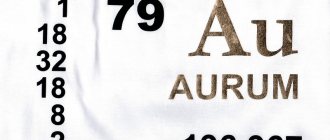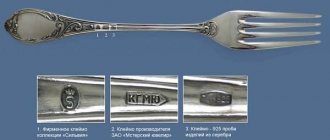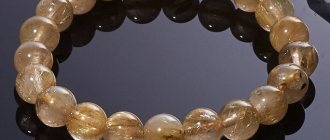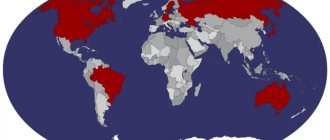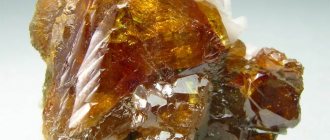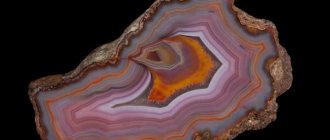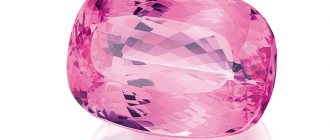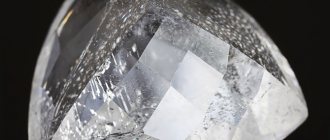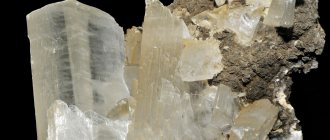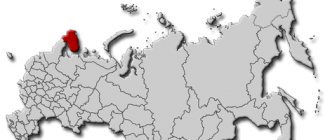On geographical maps, an attentive reader must have noticed circles, squares, diamonds and other icons. These symbols show what minerals are found in a given area. You will find information about basic notations in this article.
It should be clarified that maps of mineral resources are constantly changing and supplemented, because geologists regularly discover new deposits, and information about their location is included on the maps.
The riches of our land
On a geographical map, topographers apply special symbols and signs indicating what exactly is located in a particular place. For example, forests are indicated as trees or in the form of a green rectangle, seas - in the form of a blue rectangle, sandy terrain - in yellow, and so on.
The earth is rich in such minerals as oil, gas, coal, peat, black ore, non-ferrous ore, lime, clay, sand, granite, precious stones (ruby, diamond, sapphire, emerald), fresh water, mineral water and so on. Thanks to topographers, people find out in which area gas or oil is produced, and much more.
According to the designations of mineral resources on the map of Russia, it is rich in oil and gas (Tyumen, Tomsk, Novosibirsk, Perm, Orenburg regions, the Republic of Tatarstan, Bashkortostan and so on), coal (Pechora, Kuznetsk, South Yakutsk basins), oil shale (St. -Petersburg deposit), peat (Northern Urals, Western Siberia), iron ores (Kursk), copper (Norilsk) and much more.
Students learn how minerals are mined, how they are cultivated, and how they need to be protected.
Kimberly. South Africa
South Africa is one of the world's leaders in diamond mining, and the group of deposits in the Kimberley area is one of the largest in the world. For example, the reserves of the Venice mine of the De Birs corporation are estimated at 102 million carats.
In the photo: The Big Hole kimberlite pipe is a landmark in Kimberley, South Africa.
The first deposits were discovered here back in 1871, and the total area of South African deposits is 196 thousand m². It is interesting that it was from this place that the name of the rock containing diamonds was given.
Diamonds are extracted from 12 kimberlite pipes using open and closed methods, and the reserves of the valuable earth mineral will last for decades.
7
Symbols of mineral resources on the map
Each fossil has its own designation. Let's look at the most common ones:
- Coal is designated in the shape of a black square.
- Brown coal is a white square with diagonal black stripes.
- Oil shale is a black parallelogram.
- Oil is a black elongated trapezoid, similar to a triangle.
- Gas is the same symbol as oil, only white.
- Iron ore is a black triangle.
- Aluminum ores - a white circle inside a black square.
- Copper - black rectangle.
- Gold is a black and white circle, colored in half.
- Table salt - white cube.
Diamond industry in recent history
Since 1980, global industrial production of diamonds has increased 3-4 times, but, nevertheless, diamonds are still considered an extremely scarce natural resource. Over the past 25 years, more than 12 thousand kimberlite deposits have been discovered in the world. But at the same time, only 1% of these deposits contain a sufficient amount of diamonds to make their mining economically profitable.
Naturally, this is due to the fact that no one sifts tons of rock through a sieve anymore, dreaming of finding one small diamond. Today, diamond mining is a labor-intensive process that requires both huge investments and high technical skills. The size of industrial diamond mines is so large that they can be seen from space.
The most widely represented diamond deposits are on the African continent. In some politically unstable countries in West and Central Africa, the military junta has taken strict control of diamond mining. Using funds from the sale of jewelry to invest in military operations in the country. Stones from these countries, most often smuggled, are called “blood diamonds” or “stones of grief and war.”
Therefore, in 2002, the UN initiated the so-called Kimberlite Process, which was supposed to stop the smuggling of diamonds from military conflict zones and the use of the proceeds to further continue the war. But still, this problem could not be completely solved, because in African countries, their state of customs control, smuggling is flourishing and the export of diamonds continues. Among other things, diamonds are also supplied by countries that are not in a state of direct hostilities, and these diamonds are considered “clean”, but are also used to escalate a military conflict.
What do mineral symbols look like?
I don’t know how it is now, but before, even in the 90s, we were forced to learn symbols in order to use maps. There were also a lot of educational economic games, in which the symbols were remembered very easily. Nowadays there are probably no such games anymore. I don’t know about the school curriculum, but the designations look like this:
Mineral resources usually include rocks and minerals that are of industrial or national economic importance. Their classification is different: they may differ in physical properties
- solid - these include rocks, coal, marble, granite, salts and ores
- liquids such as oil, mineral waters
- gas - the name itself speaks for itself - these are flammable gases.
Classification can also be made according to the type of their use, then the types can be as follows
- ornamental or precious stones
All of them have their own symbols adopted by the international standard. .
We all use atlases at school, in elementary school it is a determinant atlas, in higher grades there are contour maps with an atlas on geography, where students must complete the task and draw in the contour maps, but without special knowledge, it will be difficult to complete the task. For example, what color to paint the forest areas where the tundra is on the map, you need to know its territory and boundaries, where it passes. The same goes for notations. For example, there is a task where you will need to indicate the location of iron ore. This is where the notation will help us. I suggest you look at the designation used in the atlas. This is their international designation.
History of the discovery of diamonds
The first country where precious stones were found was India. For 2,000 years it held the status of the only country where it was possible to mine diamonds. They were attributed magical properties and used for occult rituals. There is evidence that they tried to resurrect the dead with the help of these stones, but not a single attempt was successful. At that time they did not yet know how to process jewelry.
The high density defied any instruments. The surface coating was removed from the stones, due to which they began to sparkle, but the emergence of a noble cut was still very far away. They looked like large sugar crystals layered on top of each other.
It was only in 1454 that Louis de Bernel began working with diamonds, by order of Duke Charles the Bold. He theorized that if he placed a huge sparkling stone on his armor, the reflected rays of the sun would blind his enemies, which would bring him victory in wars. In Europe, stones were used only as a weapon of military strategy, to strengthen armor. They began to be used by Agnes Sorel as decorations for noble ranks. It is not surprising that the person who introduced wearing diamonds into fashion was a woman.
The very first mentions of diamonds in Russia date back to 1073. They were used as jewelry only from the 17th century, to decorate buttons and cufflinks. Jewelry became widespread during the reign of Elizabeth II, thanks to whom a new, more noble name for the stone appeared - diamond. Society liked it so much that the word “diamond” gradually went out of use.
The first development of diamond mines in Russia began in the Northern Urals in 1829. This was a breakthrough for the Russian economy. Large-scale financing of this industry began, which led to the discovery of one of the largest deposits of precious stones in the world in Yakutia. Since that time, enterprises have begun to be built in the country for the extraction, processing and cutting of precious stones.
The largest stone in Eurasia was found in 1980 and was 324 carats. It was discovered in the Mir kimberlite pipe, which at that time was one of the most valuable and richest.
Symbols of mineral resources on maps
Deposits of certain mineral resources are marked on a number of maps: general geographical, geological, economic and others. In this case, special designations of minerals are used. They belong to the category of non-scale cartographic signs.
Geographical designations for minerals used in cartography are generally accepted. You can see what they look like in the diagram below. These signs are studied at school as part of the subjects of general geography and natural history. They can also be found in school and thematic atlases.
In addition, there is a special GOST number 2.857-75, which was developed by a number of Russian scientific institutes. This standard specifies not only the designations of minerals, but also the conditions of their occurrence. However, these signs are used exclusively by geologists. Thus, diamond deposits in this GOST are designated in red, sulfur – lemon, oil – brown, rock salt – purple.
But we will still return to those designations of minerals that are widely used in cartography. Let's take a closer look at what the symbols look like for those mineral resources that are of the most industrial importance in the modern world.
Fifth place. Angola. $1.2 billion
Fucauma diamond mine in Angola
The economy of Angola today is based on the production and export of oil. It is this area that accounts for 85% of the country’s total GDP. Thanks to its oil component, the economy of this country is the fastest growing among all the states located in Africa slightly south of the Sahara. By the way, in 2008, the GDP growth of this state was as much as 15%, while the countries of Black Africa at that time showed only 5% growth. Per capita GNP in 2008 was $5,020. The presented indicator is actually the highest achievement for the represented region of the world.
Ore minerals: symbols of deposits
Examples: iron and manganese ore, copper, nickel, mercury, tin, aluminum, gold, tungsten.
Symbols of ore minerals on maps are most often red. They look like this:
- Iron ores are a filled equilateral triangle.
- Titan is a diamond with the left half shaded.
- Molybdenum is a rhombus with a white square inside.
- Copper is a filled elongated rectangle.
- Tungsten is an unfilled square.
- Mercury is an open circle.
- Aluminum is an equilateral square with a circle inside.
- Gold is a circle with the left half shaded.
- Polymetallic ores are a designation reminiscent of a radiation hazard sign.
Deposit named after M. Lomonosov. Russia
Diamonds in Russia are mined not only in Yakutia. Thus, the largest deposit in the European part of the Russian Federation, located near the village of Pomorye in the Arkhangelsk region, was discovered in 1980.
The first exploration work was carried out in 1994, but comprehensive production began in 2005. The deposit named after the famous Russian scientist is a complex of six kimberlite pipes.
It is famous for the fact that in the summer of 2009 a diamond weighing 30.6 carats was discovered here, the largest to date found in Europe.
11
Non-metallic minerals
Examples: graphite, limestone, sand, kaolin, granite, clay, rock salt, phosphorites, marble.
Symbols for non-metallic minerals on maps are usually green. They look like this:
- Asbestos is the symbol of a simple Greek cross.
- Native sulfur is an equilateral triangle with the left half shaded.
- Mica is an empty square crossed along one diagonal.
- Phosphorites are a filled circle with a vertical slot in the middle.
- Apatity is a filled circle with a horizontal slot in the middle.
- Diamonds are an eight-pointed star.
- Limestone is an empty square intersected along both diagonals.
- Kaolin is a square crossed along one diagonal, with the right half shaded.
Diamond: description of the stone
Nature has given people many gems. Diamond is considered the best and most famous of them. The shining crystal got its name from the word adamas, which is translated from Greek as indestructible. And in England the mineral was called “diamond”. A rough diamond doesn't look very attractive.
Only after the precious stones are in the hands of a jeweler do they turn into incomparable diamonds.
Crystals, which amaze everyone with their beautiful appearance, have been used to create jewelry since ancient times. In some states several centuries ago they were hard currency.
Physical properties
Mineralogists recognize that the physical properties of diamond are extraordinary, different from all other minerals. It has:
- diamond shine;
- perfect transparency;
- resistance to heat;
- perfect cleavage;
- high thermal conductivity;
- inability to conduct electricity;
- fracture conchoidal to splintered;
- cubic system;
- refractive index from 2.417 to 2.421;
- strong dispersion.
The color range of Adamas is very diverse. There are specimens that are colorless, and others with blue, green, yellow, pink, red, and brown tints.
Chemical properties
Chemically, diamond is one of the modifications of crystalline carbon. The chemical properties of diamond are:
- hardness on the Mohs scale 10 units;
- specific gravity 3.48-3.55 g/cm3;
- the mineral is resistant to acids;
- it may contain impurities.
Magic properties
The magical properties of diamonds were revealed by rich people who could afford jewelry with sparkling stones. Many close to the imperial courts noticed how crystals influenced the lives of people or their families.
- A diamond necklace will help you cope with difficulties at work. Thanks to the necklace, the girl will attract the attention of a wealthy man. This acquaintance will be the beginning of a long-term cooperation, in which the owner of diamonds will have the opportunity to improve her financial situation.
- A diamond ring will bestow talent on its owner. One of a person’s abilities will actively develop, which will become the basis for new attempts to prove himself in different professional fields.
- A bracelet with diamond inserts will be the key to a happy personal life. The owner will be able to find his soul mate and get rid of the feeling of loneliness.
- Earrings will multiply a person’s thinking abilities many times over. The owner will have a disposition to work hard for a long time, and complex tasks will no longer seem unsolvable.
Optical properties
Mineralogists highlight the optical properties of diamond:
- refraction of a shining crystal is 2.4175, impurities can increase this indicator;
- the variance is 0.63;
These abilities give the precious mineral the ability, after professional cutting, to shimmer with all the colors of the rainbow.
Luminescence (the ability to shimmer under solar, cathode, ultraviolet and x-ray rays) is an important property of a unique gem. Cathode and X-ray radiation make all diamonds glow, ultraviolet radiation only makes some.
When heated to 900 degrees, the precious mineral turns into graphite.
Fuel (combustible) minerals
Examples: oil, natural gas, peat, coal, brown coal, oil shale.
Symbols for fuel minerals on maps are usually black. They look like this:
- Oil is a filled isosceles triangle.
- Natural gas is an empty isosceles triangle.
- Coal is a shaded equilateral square.
- Brown coal is an empty square with diagonal hatching.
- Oil shale is a shaded parallelogram.
Diamond mining in Russia
Almost all of the country's diamond deposits are located at the latitude of permafrost, so mining is expensive and difficult. But the quantity and quality of the extracted material justifies the costs.
Story
The first diamonds were discovered in the Russian Empire in the 18th century, but mining began later. Plans for the industrial development of the riches of Siberia were formed at the dawn of Soviet power, by the 1930s. Vladimir Sobolev proved that they are similar to the diamond mines of Africa.
We recommend reading: If you want changes in life, wear jewelry with obsidian
Research work was interrupted by the war, the search continued after the victory. In 1949, one of the expeditions found a diamond pebble in Yakutia, and six years later they discovered the first kimberlite pipe in the Union. It was called “Mir”, and the taiga city built nearby was called Mirny.
By the beginning of the third millennium, Russia took second place in the world ranking of diamond suppliers. On the border between Yakutia and the Krasnoyarsk Territory, the largest deposits of diamonds of meteorite origin on the planet have been discovered.
"Peaceful" kingdom
The diamond capital of Russia is the city of Mirny (west of Yakutia). It began as a tent settlement for workers, becoming a major industrial center of the country a few years later. Today 35 thousand people live here, almost 30 thousand are employed in the diamond mining industry. The place of work - the Mir quarry - is located near the city.
Its 1.5-kilometer depth accommodates the Ostankino Tower, and the length of the mine road is eight kilometers. Open pit mining has been completed and the diamonds mined today are from an underground mine. The remaining giant crater became the “signature” of the city, visible from space.
